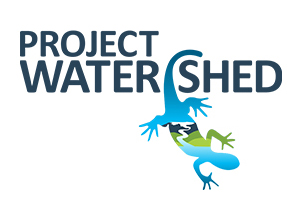Emily Carr Students Tour of the K’ómoks Estuary
On January 14th, good weather prevailed and Project Watershed hosted a tour of the K’ómoks Estuary for 10 Emily Carr students and six North Island College Adventure Tourism students. The Emily Carr students are studying at the North Island College Campus and enrolled in the Emily Carr “Pieces of an Estuary” program.
The “Pieces of an Estuary” program is an environmental art and public education course in consultation with the David Suzuki Foundation and in partnership with Project Watershed Society. Students will share outdoor adventures and collaborate with musicians to create original songs and music videos celebrating and raising awareness about the economic and cultural values of the K’ómoks Estuary.
The tour started in the K’ómoks Big House with oral stories about the estuary from Elder Mary Everson. Candice Newman described the K’ómoks First Nations Guardian program which provides stewardship on their traditional lands. Both Everson and Newman acknowledged Project Watershed for facilitating the tour and thanked the students for their dedication to the estuary and learning.
Led by Project Watershed Director Dan Bowen and staff biologist Jennifer Sutherst, the entire group travelled to Goose Spit. Bowen took the group up the “Goose Grind” stairs to view the geological history of the area. He explained the importance of the watersheds that flow into the estuary and the stewardship of the many groups in the Comox Valley.
The group then traveled to the Air Park. Jennifer noted the benefits of the new culvert that project Watershed installed this summer that allows the water to flow through the lagoon for fish and wildlife habitat.
The last stop on the tour was the Royston Seaside Trail and Royston Wrecks. Bowen talked about the eel grass that Project Watershed planted in the area. Director Bill Heath discussed the bull kelp restoration project and Sutherst discussed the shoreline restorations with salt marsh berms assembled on the shoreline. They also stressed the restoration benefits for salmon migration and climate adaptation. The entire group finished at the Royston House Bed and Breakfast to end a busy and productive day hosted by owner and Estuary Working Group member Ross Monroe.
Working with the K’ómoks Nation towards Q’waq’wala7owkw on their unceded territory.

